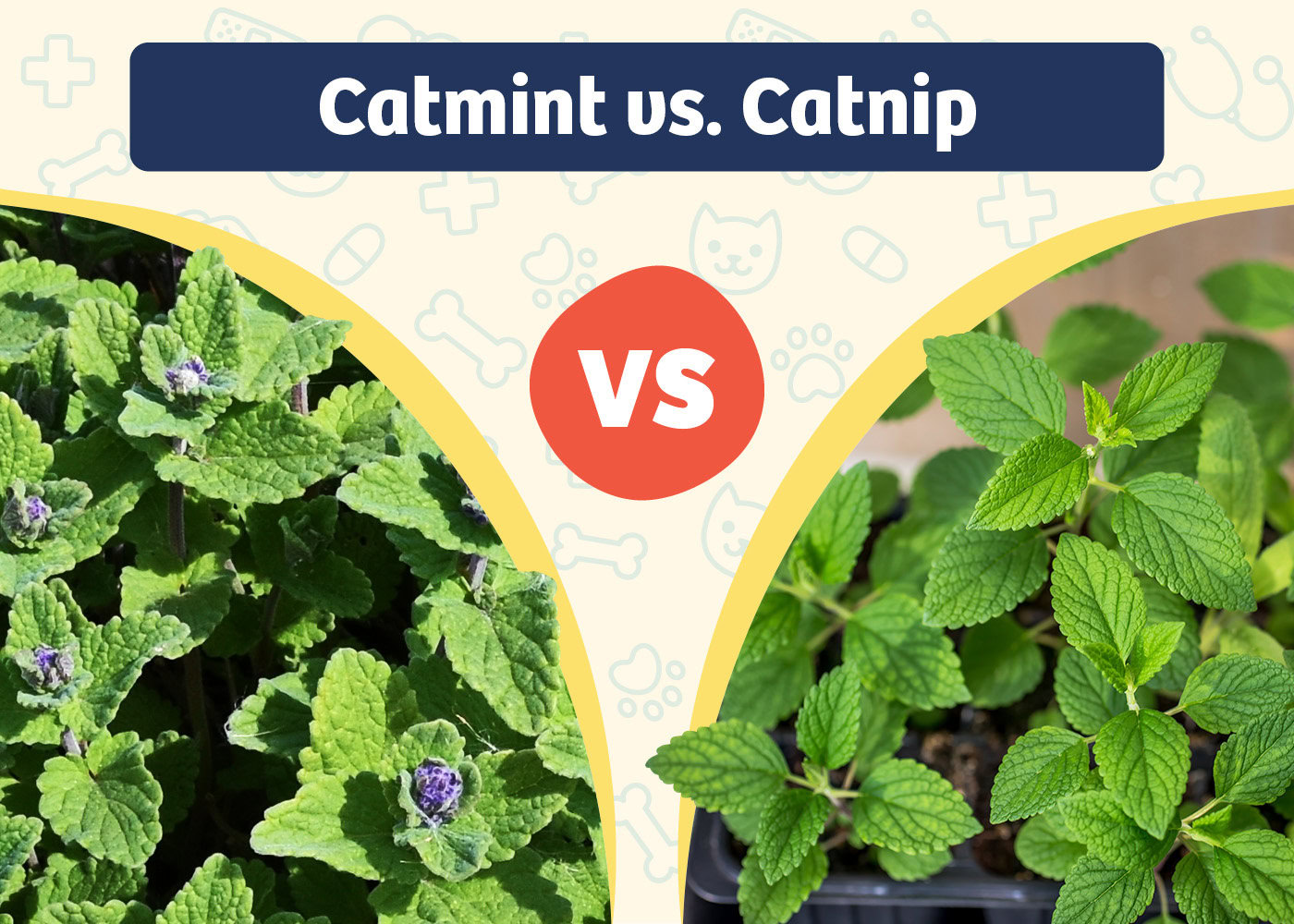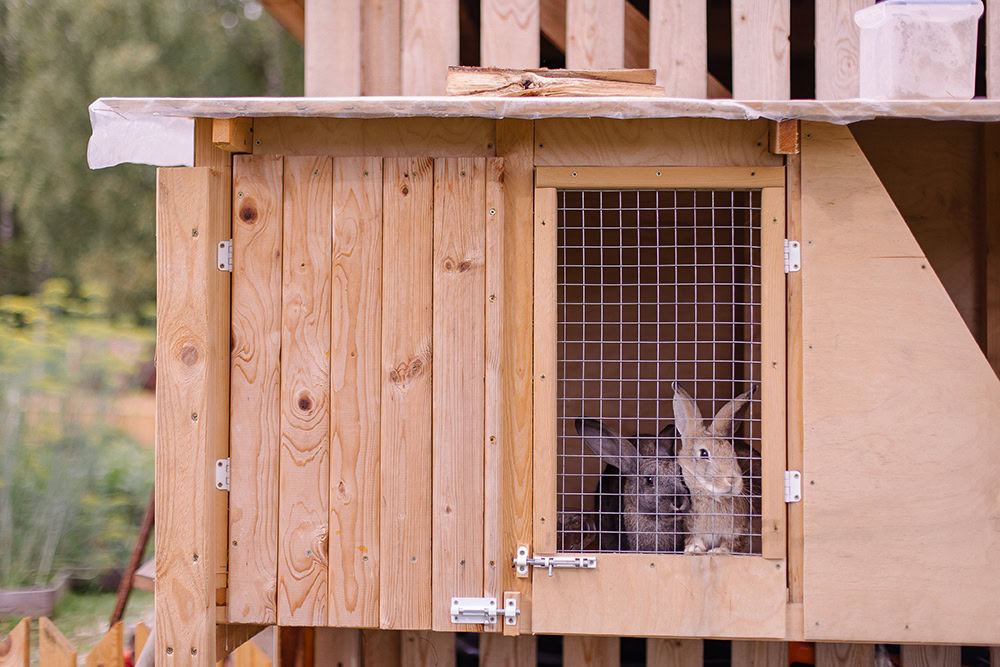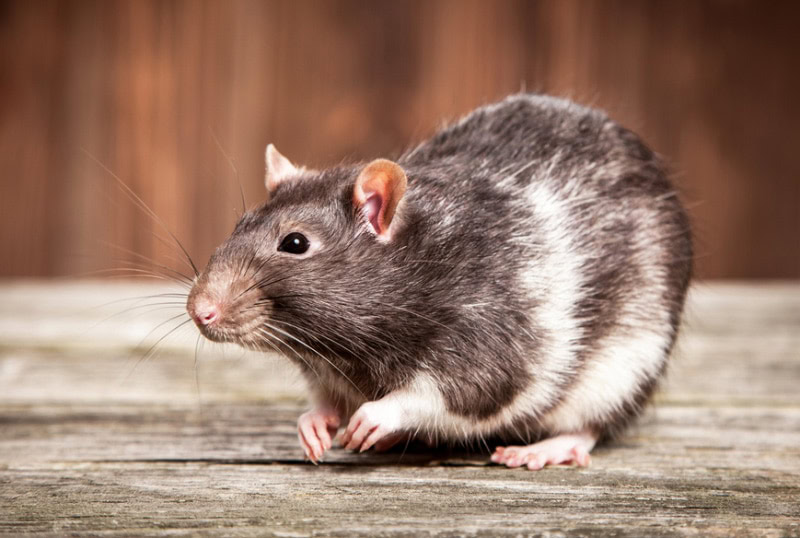VET APPROVED

The information is current and up-to-date in accordance with the latest veterinarian research.
Learn more »Click to Skip Ahead
If you know about cats, you probably know about catnip, and the remarkable, often entertaining, effects it has on cats. Some find it soothing, some find it arousing, and some find that it turns them a bit feral! But around 40% of cats experience no effects at all, apart from feeling perplexed at the other cats rolling around in a blissful haze.
You may have heard catnip also being called catmint, which it is. However, the terms aren’t technically interchangeable. In fact, catnip is one type of catmint, while the plant sometimes referred to as catmint is actually a hybrid of two different catmints.
If you’re feeling as confused as a cat on catnip, don’t worry. It will all make sense soon!

What is Catmint?
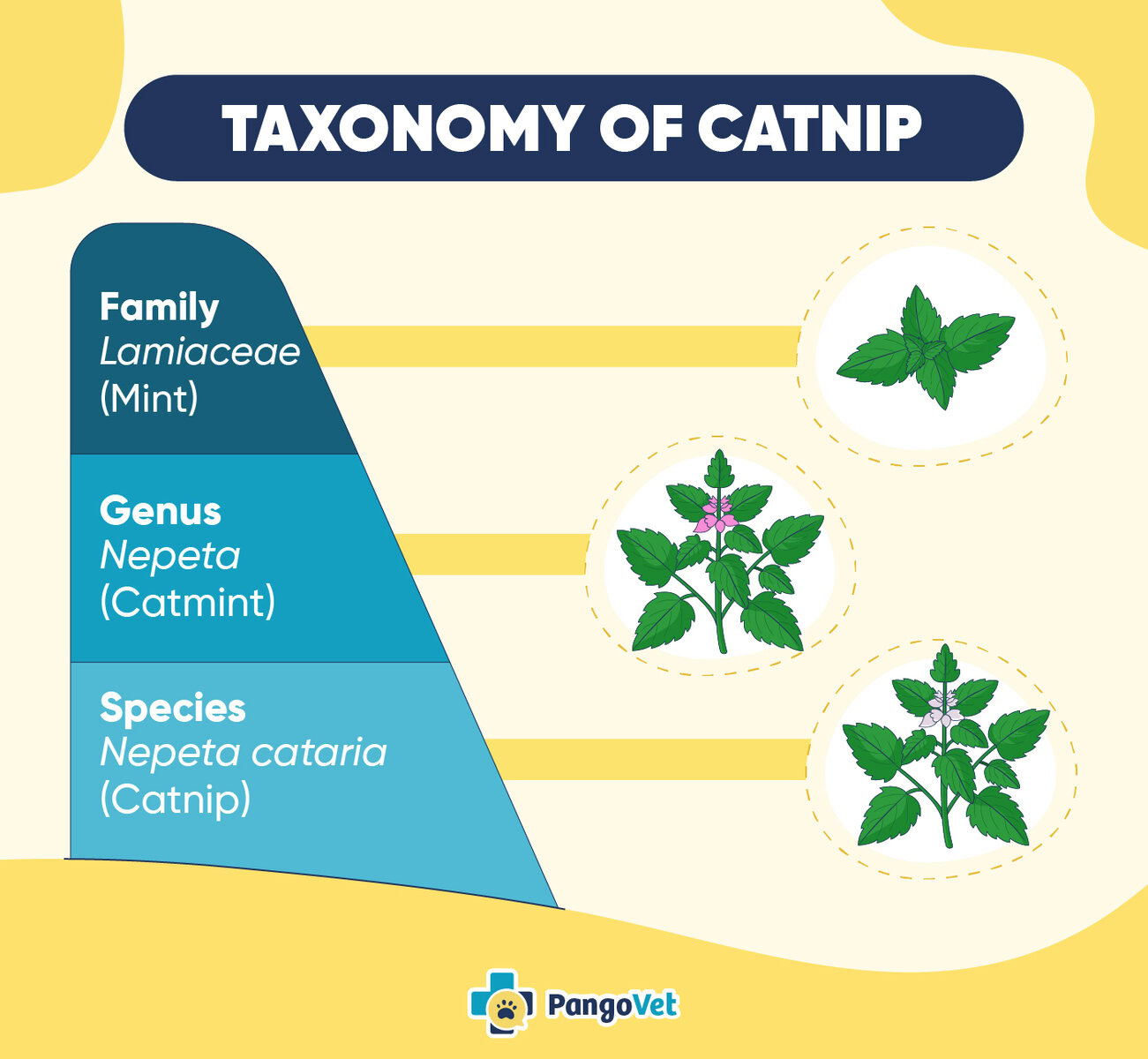
Let’s start with a brief lesson in taxonomy. Within the plant family Lamiaceae, also known as the ‘mint’ family, you will find a large number of familiar herbs such as peppermint, lavender, basil, oregano, and rosemary.1 Among these is the genus Nepeta, which contains around 250 species, one of which is Nepeta cataria, aka catnip.
Another plant that is sometimes referred to as ‘catmint’ was created by crossing two species of Nepeta (N. racemosa and N. nepetella). This hybrid is called Nepeta x faassenii, and goes by the common name of ‘Kit Cat.’2 The advantage of this hybrid species is that it is sterile, so it does not pose the threat of becoming invasive as catnip has done in some areas.
Additionally, Kit Cat is less potent than catnip, making it a more suitable option when dealing with larger cat populations, such as cat sanctuaries, where a large group of intoxicated cats can become aggressive.
What is Catnip?
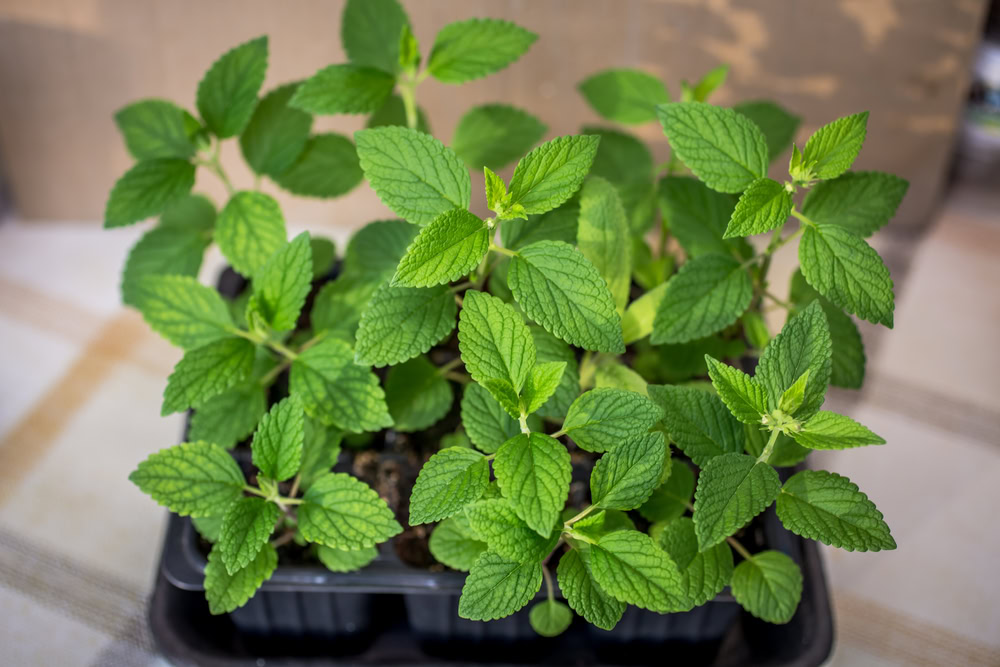
The genus Nepeta is named for the essential oil nepetalactone, which is found in the leaves and stems of many of its species. When vaporized, nepetalactone can trigger behavioral responses in cats, including tranquility, stimulation, excitation, and mild aggression. Catnip (Nepeta cataria) contains particularly powerful levels of this chemical, hence its name and popular use in the feline toy industry.
Catnip is quite a hardy plant and can spread rapidly, and in some parts of the US, it is considered invasive, so it is recommended that you check before planting it in your garden.
Is There Only One Type of Catnip?
Interestingly, Nepeta cataria has a subspecies called Lemon Catnip (N. cataria spp. citriodora). Unsurprisingly, this form of catnip has a powerful, citrusy scent that many humans find pleasing, but other animals, including cats, do not. If you’re looking to attract or endear yourself to the local feline population, Lemon Catnip is not a good way to go about it; however, if you are looking for a safe, natural, and environmentally-friendly way to deter cats, mice, rabbits, deer, and other mammals from your garden, this may be the plant for you. Not only that, but Lemon Catnip is known to repel insects like mosquitoes, ants, beetles, and fleas, and the essential oil from this plant has been found to be as effective at repelling insects as the commercial chemical DEET, when tested on bedbugs.

Final Thoughts
Just as all thumbs are fingers, but not all fingers are thumbs, all catnip is catmint, but not all catmint is catnip! Given that the different species within the Nepeta genus can have slightly different, and even vastly different, effects on our pets, it’s important to make sure you’re getting it right when planting it in your garden or catio. When selecting catmint plants, be sure to check the botanical name, and remember that:
- Catmint is the name for the genus Nepeta. Within that genus, there are the species:
- N. catari – true catnip
- N. catari spp. citriodora – lemon catnip
- Nepeta x faassenii – a less potent, sterile hybrid called Kit Cat, often erroneously referred to simply as catmint
Catnip will provide a titillating experience for around 60% of cats, while lemon catnip may deter them. If you’re looking for a milder or less invasive nepetalactone option, ask your garden center to find you a Kit Cat. You’ll just have to wait and see if they bring you a plant, a cat, or a chocolate bar!
- https://www.chicagobotanic.org/downloads/planteval_notes/no29_catmint.pdf
- https://www.missouribotanicalgarden.org/PlantFinder/PlantFinderDetails.aspx?taxonid=264451&isprofile=0&gen=Nepeta
- https://thegrowers-exchange.com/products/catnip-lemon?srsltid=AfmBOorcJkfKD6ayWbi_hSlMGIIVYHfRTRPk5xpfe_7pVykBXlLdSbsW
